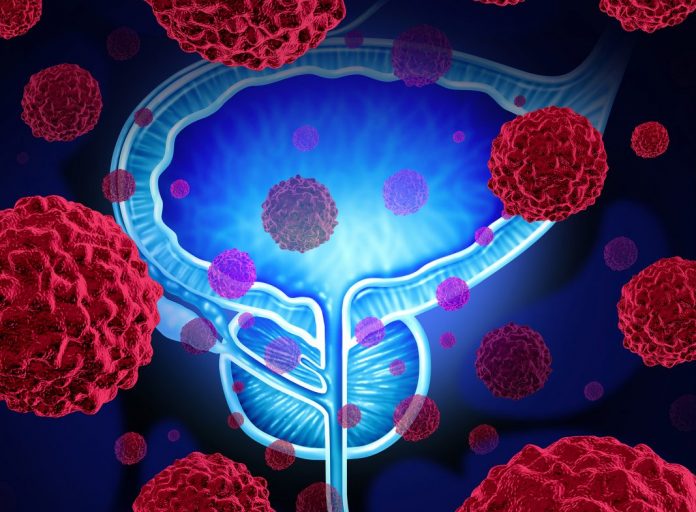
Researchers have discovered a previously unknown role of minor introns, which constitute less than 0.5% of all introns, in gene expression and role in prostate cancer progression and resistance to treatment. The team also demonstrated that use of a siRNA inhibited the minor spliceosome, resulted in prostate cancer cell death, even in castration-resistant cancers. Their work is published in Molecular Cell.
Major intron splicing is a process most human genes use to make new proteins. Genes contain introns—or sequences that break up coding information. To make a protein from these genes, a process is needed to remove the introns which allows the exons to fuse together. Eukaryotic genes break information into smaller pieces that can be mixed and matched to create a larger number of diversified proteins.
“Introns became a pretty important part of evolutionary process, and 95 to 99% of the genome uses this machinery,” said co-senior author Rahul Kanadia, of the University of Connecticut. But it turns out that there is a parallel machinery that has evolved which is used by 0.5% of the genes—the minor spliceosome. “The minor spliceosome is important for survival and cell cycle regulation, but we also discovered that it also has a role in treatment resistance in cancer cells,” Kanadia added. The genes of the minor spliceosome also enrich interactions of prostate cancer-causing genes.
Specifically, the investigators learned that a specific small nuclear RNA component of the minor spliceosome, called u6atac, regulates minor spliceosome activity.
“U6atac is considered to be the bottleneck of the minor spliceosome, and increases in aggressive prostate cancer types, such as castration-resistant cancers, and also neuroendocrine tumors,” added first author Anke Augspach, of the University of Bern. In their studies, the team blocked U6atac with a small interfering RNA (siRNA). “It worked quite well, and we showed we could block these cancers but also other cancer types including glioblastoma, breast, and colon.” Knocking down U6atac via this siRNA was roughly 50% more efficient in lowering tumor burden in models of advanced therapy-resistant prostate cancer compared with standard antiandrogen therapy.
The U6atac-targeted siRNA reduced the viability and confluence of the cancer cells but normal cells, like fibroblasts and normal prostate cancer cells were not affected. The results were confirmed in studies in organoids leading the authors to believe that U6atac triggers decreased minor splicing, consequently leading to an increase in minor intron retention in those genes.
“We think that the process of cutting genes in a different way—via the minor spliceosome—potentially enhances the ability of the tumor cells to be resistant to therapy,” noted study co-senior author Mark Rubin of the University of Bern, Germany. “This is a new mechanism which has not been mapped out well in cancer before, but it suggests that if tumor cells find the right way to splice genes it could act as a mechanism of resistance. We studied it in prostate cancer but there is no reason why it would not be relevant for other cancers as well.”
Further, the team found that siU6atac disrupted the splicing of RE1-silencing factor (REST), a known driver of neuroendocrine cell differentiation and lineage plasticity in prostate cancer. “One of the themes in resistance currently—and it is one of the Cancer Grand Challenges—centers on lineage plasticity,” added Rubin. “We hope our paper—which shows just one example of how targeting splicing blocks lineage plasticity—opens a new field of study.”
Determining how to target the minor spliceosome remains a key therapeutic challenge. “We don’t want to turn it off because it could hurt normal cells. We want to turn it down,” said Rubin. To that end, Augspach is working on a screen to identify small molecules, among other approaches, to turn down the minor spliceosome such that it preferentially affects the tumor cells but not the normal surrounding cells or minimally.












